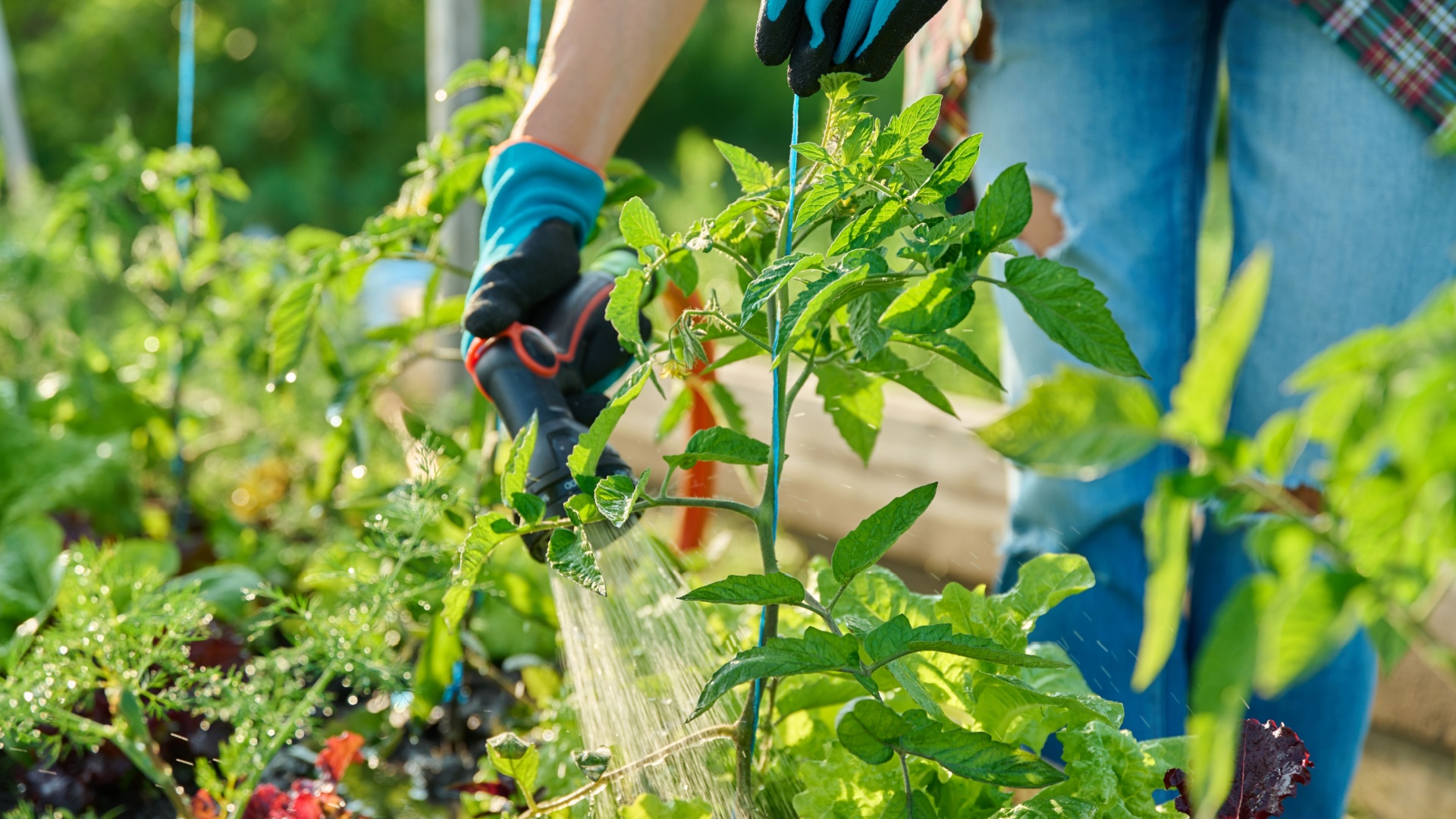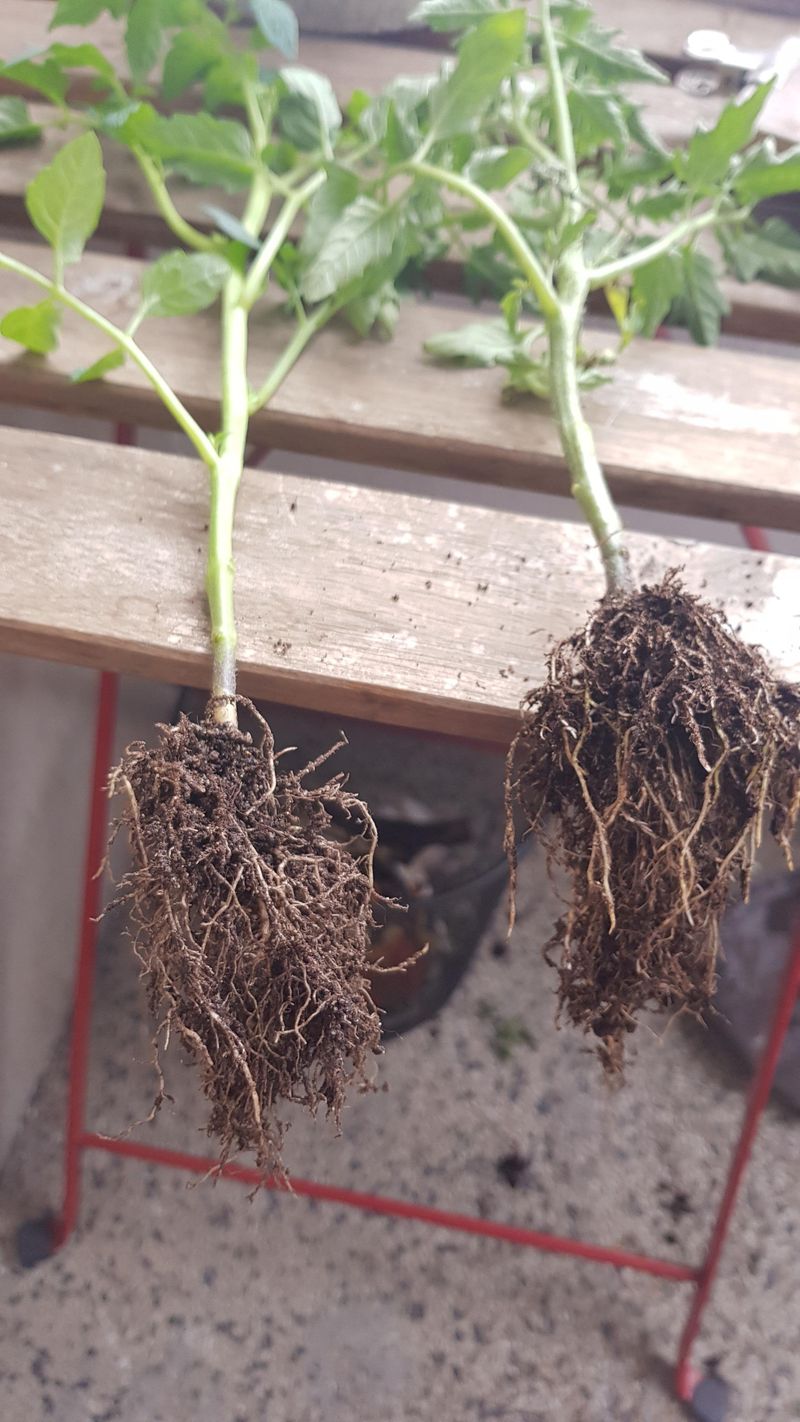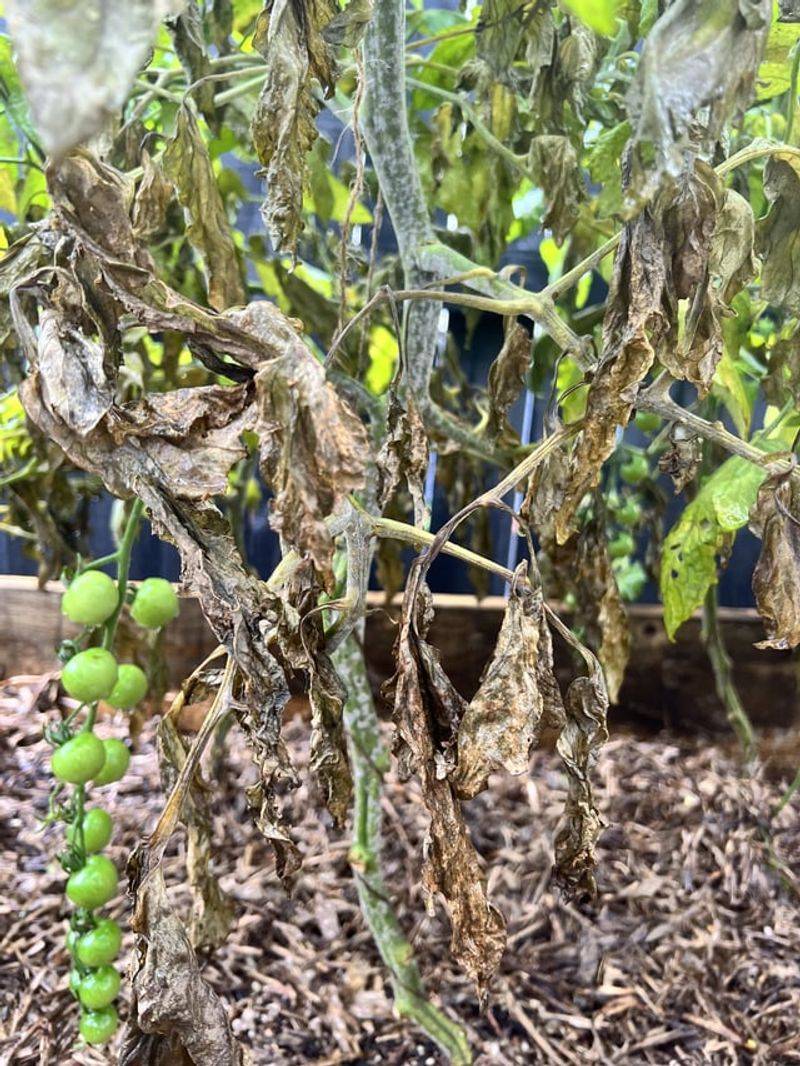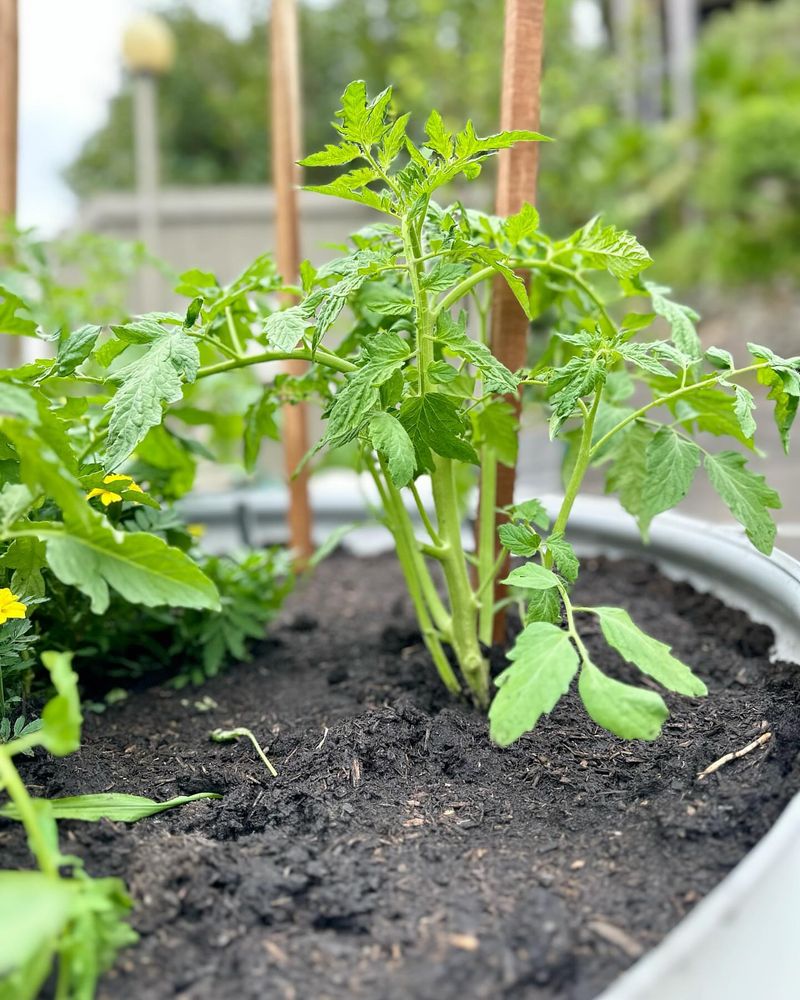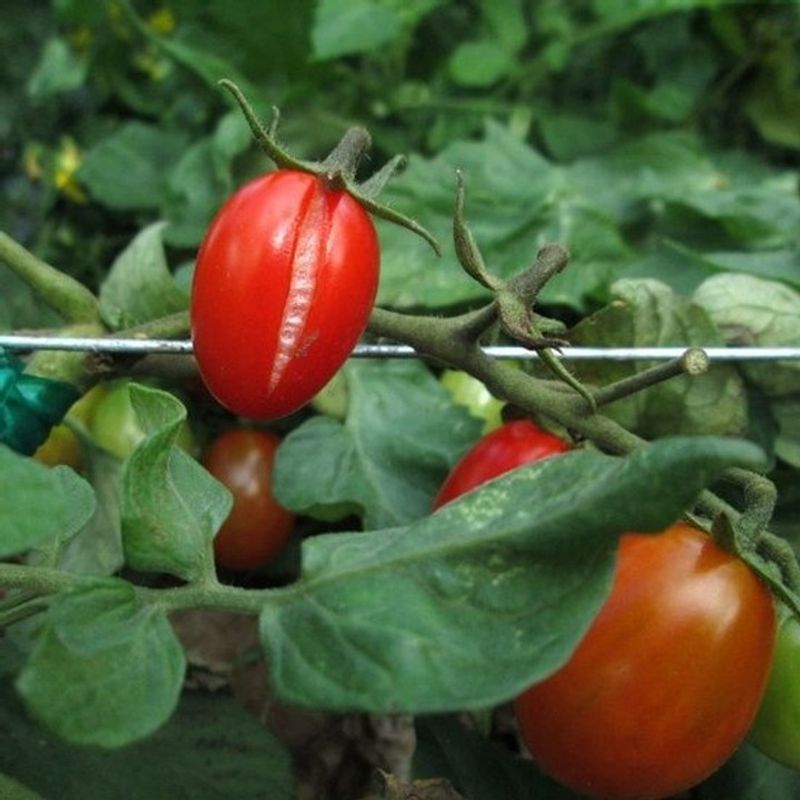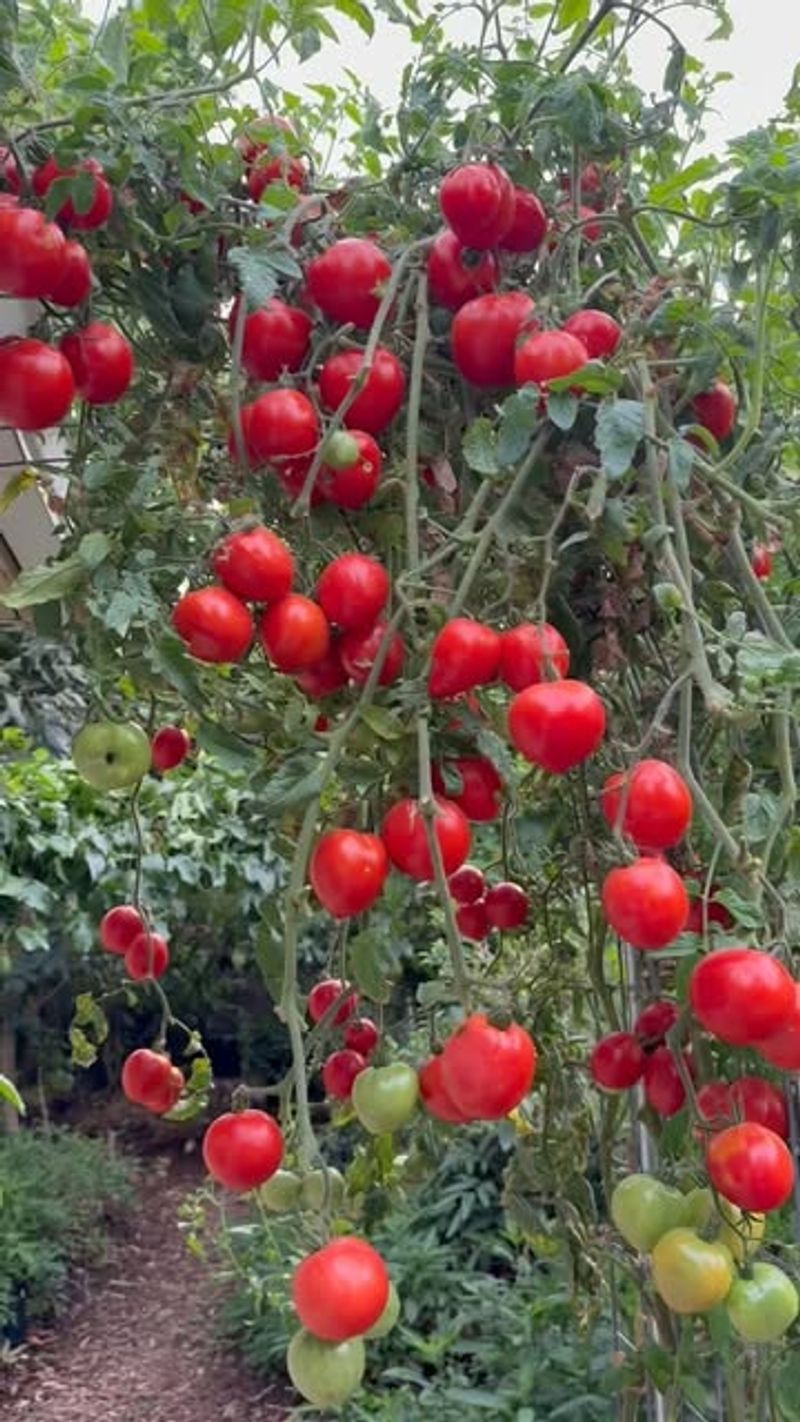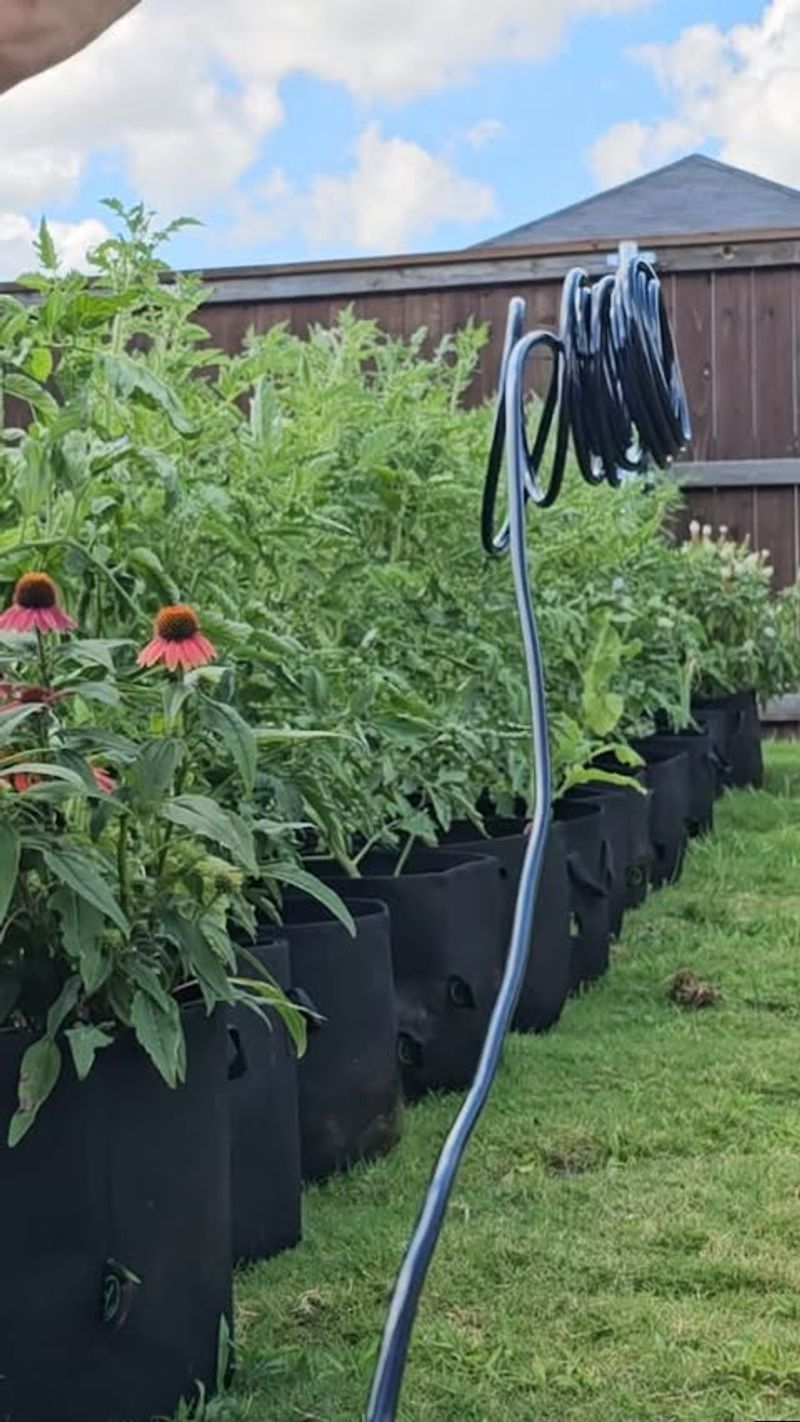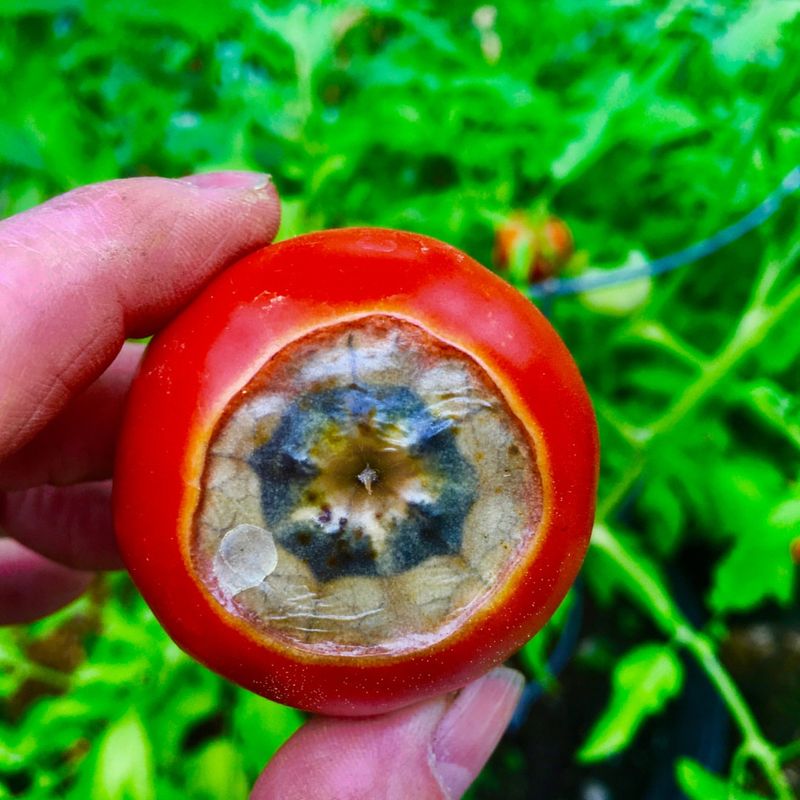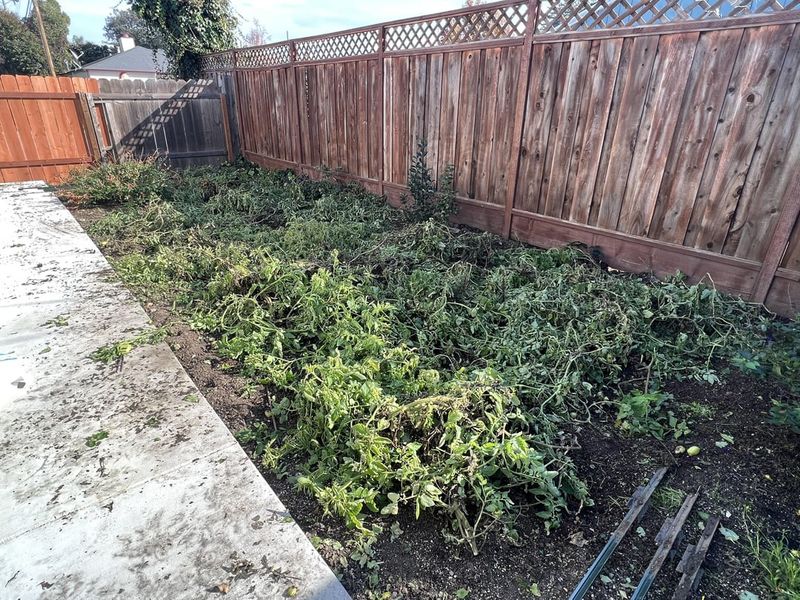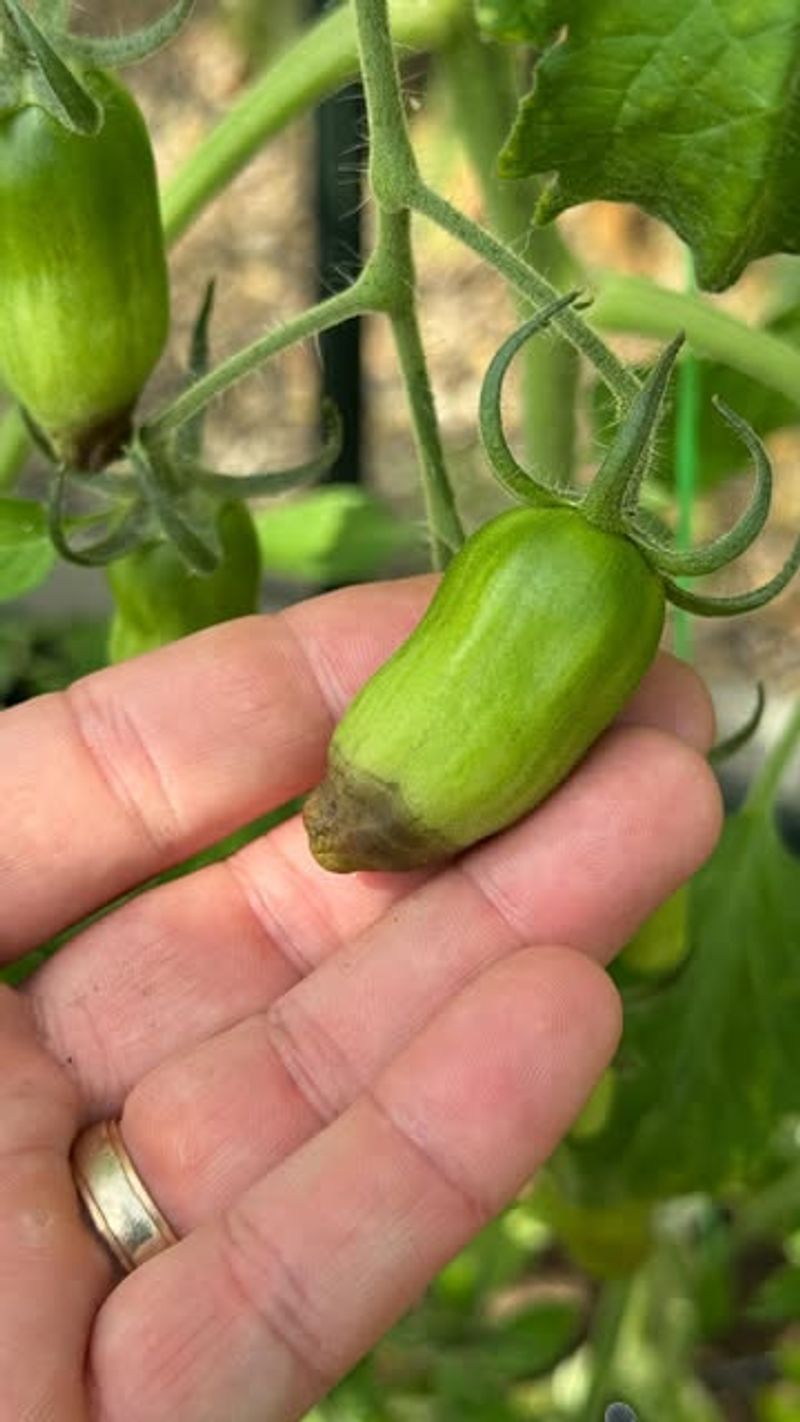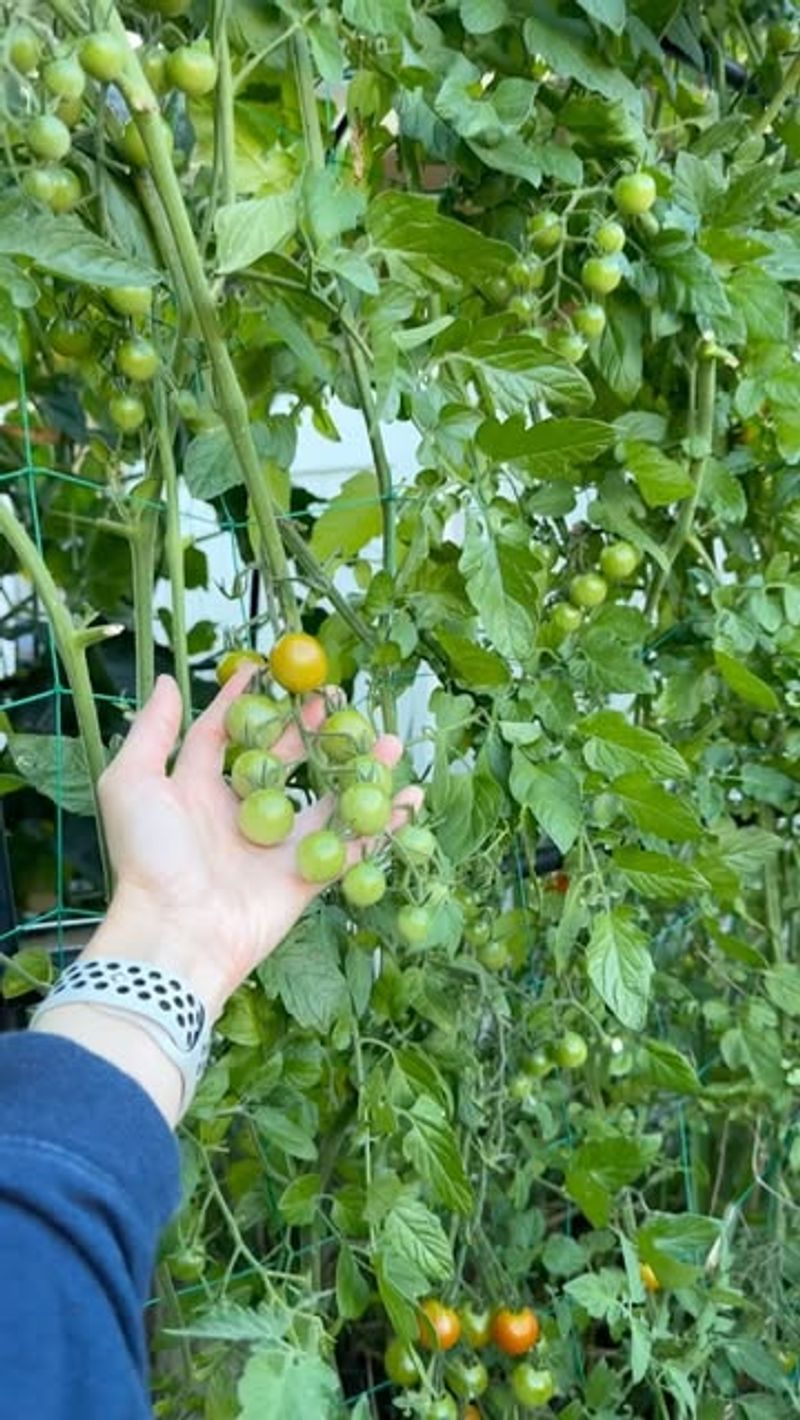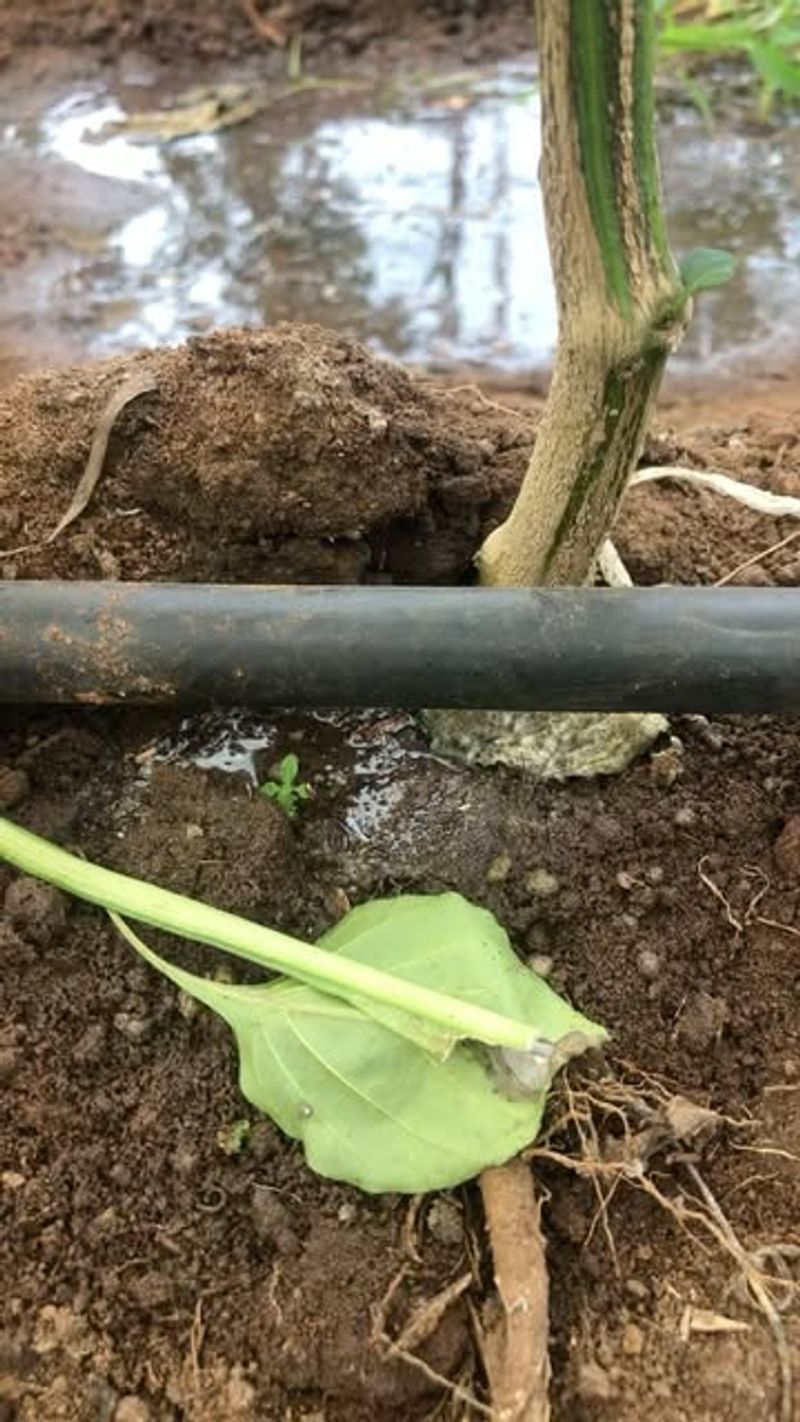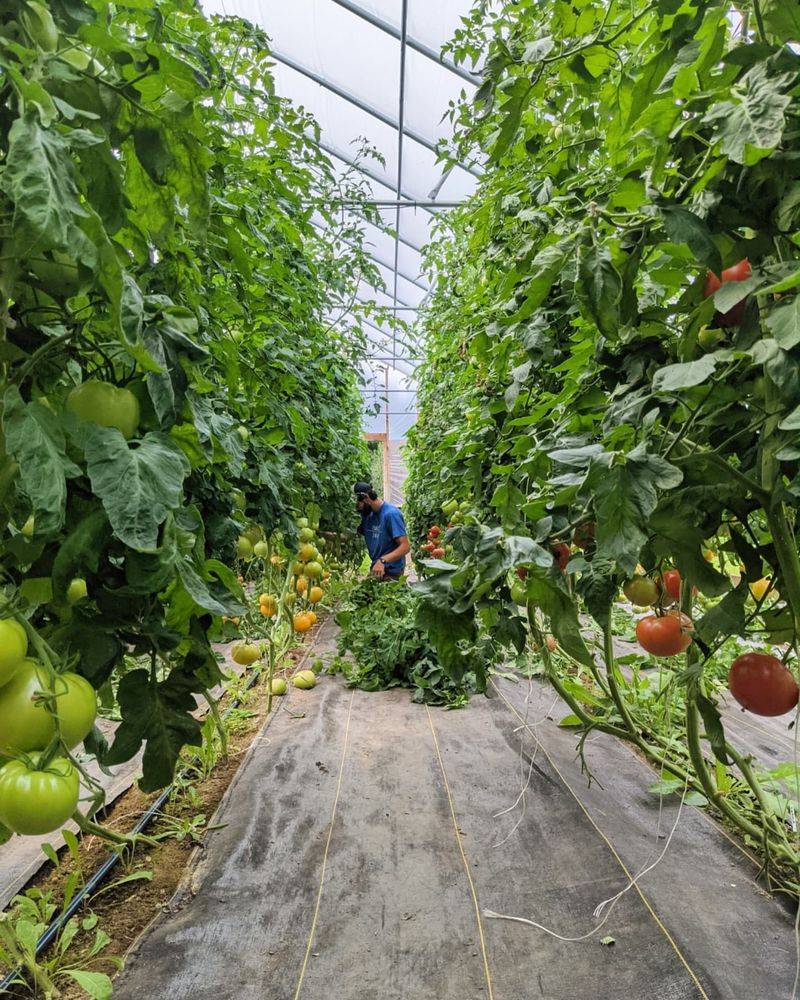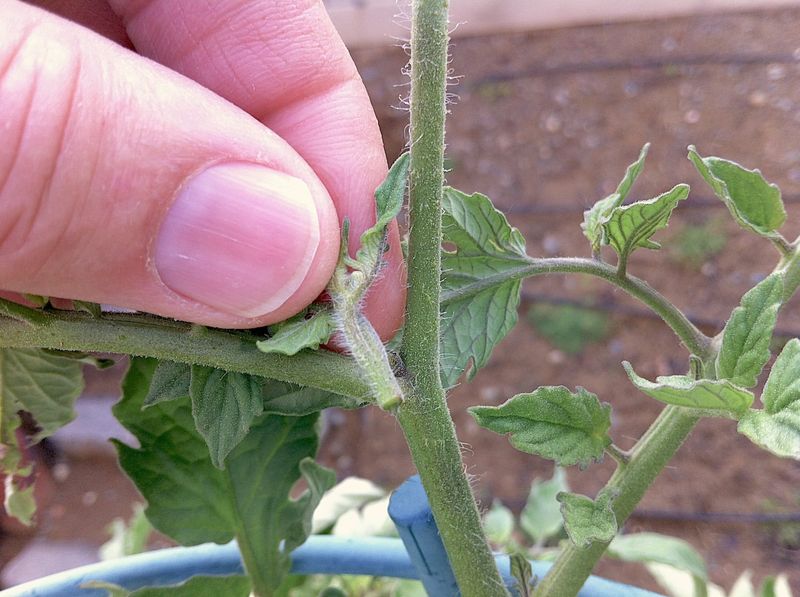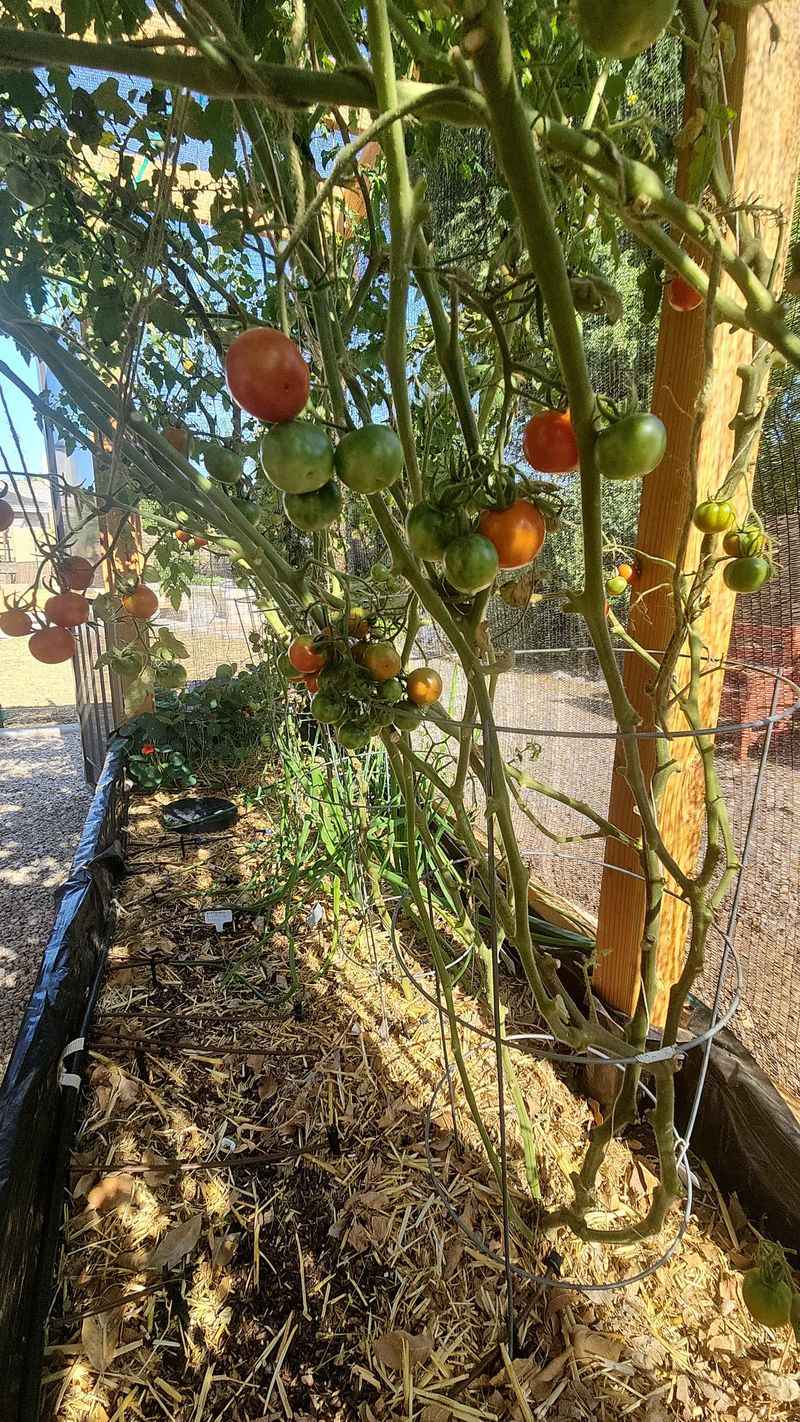Growing juicy tomatoes in Oregon’s unique climate can be tricky. Many gardeners think daily watering is the key to success, but this common practice might actually be sabotaging your harvest.
Oregon’s mix of rain, humidity, and seasonal dryness requires a smarter approach to tomato irrigation that works with nature, not against it.
1. Shallow Root Development
Frequent light watering encourages tomato roots to stay near the surface instead of growing deep into the soil. When roots remain shallow, plants become less drought-resistant and more vulnerable to topsoil temperature fluctuations.
Better approach: Water deeply but less frequently—about twice weekly during summer—to encourage roots to grow downward in search of moisture. This creates stronger plants that can withstand Oregon’s occasional dry spells.
2. Fungal Disease Paradise
Oregon’s natural humidity combined with daily watering creates the perfect breeding ground for fungal diseases like early blight and late blight. Constantly wet foliage practically invites these destructive pathogens to move in and destroy your crop.
Try watering at the base of plants in the morning so leaves dry completely before evening. Consider installing soaker hoses or drip irrigation systems that deliver water directly to the soil without wetting the foliage.
3. Nutrient Leaching
Excessive watering washes away essential nutrients your tomatoes need to produce tasty fruit. The frequent flushing of soil depletes nitrogen, phosphorus, and potassium—critical elements for healthy tomato development.
Switch to deeper, less frequent watering sessions. Add a layer of compost or organic mulch around plants to slow water movement through soil and retain nutrients. Consider using a slow-release organic fertilizer that won’t wash away as easily.
4. Cracked Fruit Problems
Daily watering followed by hot Oregon summer days creates a cycle of rapid growth and contraction in tomato fruits. The skin can’t keep up with these changes, resulting in those frustrating cracks across otherwise perfect tomatoes.
Maintain consistent soil moisture with less frequent but deeper watering. Mulch around plants with straw or bark to regulate soil temperature and moisture. During heat waves, you might need slightly more frequent watering, but still focus on consistency.
5. Flavor Dilution
Overwatered tomatoes absorb excess moisture that dilutes the sugars and flavor compounds that make homegrown tomatoes so delicious. Many gardeners unknowingly sacrifice taste for size when they water daily.
Cut back watering as fruits begin to ripen. Some tomato experts even recommend a slight drought stress during ripening to concentrate flavors. Your tomatoes might be slightly smaller, but they’ll pack much more flavor punch—perfect for Oregon’s famous farm-to-table cuisine.
6. Wasted Water Resources
Even in rainy western Oregon, summer water conservation matters. Daily watering often means much of that precious resource evaporates or runs off without benefiting your plants, especially during hot afternoons.
Install a rain barrel to capture Oregon’s abundant spring rainfall for summer use. Use soil moisture meters to determine when plants actually need water rather than sticking to a rigid schedule. Water early in the morning when evaporation rates are lowest.
7. Blossom End Rot Trigger
Daily light watering creates calcium uptake problems in tomato plants. The result is blossom end rot—those frustrating dark, sunken spots on the bottom of fruits that ruin your harvest.
Water deeply and consistently instead of frequently and lightly. Add calcium-rich amendments like crushed eggshells to your soil before planting. Mulching helps maintain even soil moisture, which improves calcium absorption and reduces this common Oregon tomato problem.
8. Soil Compaction Issues
Frequent watering, especially with sprinklers or hoses, can physically compact Oregon’s clay-rich soils. Compacted soil restricts root growth and oxygen availability, ultimately stunting your tomato plants.
Water less frequently but more deeply, allowing soil to partially dry between waterings. Add organic matter like compost to improve soil structure. Consider installing permanent pathways between rows to avoid stepping on growing areas when watering or harvesting.
9. Increased Weed Competition
Daily watering doesn’t just nurture your tomatoes—it creates perfect conditions for weeds to flourish too! These unwanted plants compete with your tomatoes for nutrients and can harbor pests and diseases.
Water less frequently but more deeply, targeting only the tomato plant base. Apply a thick layer of mulch around plants to suppress weed growth. Consider drip irrigation or soaker hoses that deliver water precisely where needed without feeding nearby weeds.
10. Pest Population Explosion
Consistently moist conditions from daily watering attract slugs, snails, and other moisture-loving pests that thrive in Oregon’s climate. These creatures can devastate young plants and damage developing fruits.
Allow soil surface to dry between waterings to discourage moisture-dependent pests. Water in the morning so surfaces dry by evening when many pests are active. Consider raised beds with gravel pathways that create less hospitable environments for slugs and similar pests.
11. Root Rot Development
Constantly wet soil creates oxygen-deprived conditions where root rot pathogens thrive. Once established, these soil-borne diseases can persist in Oregon gardens for years, affecting future tomato crops.
Create raised beds or mounded rows to improve drainage in Oregon’s often-heavy soils. Allow soil to dry partially between waterings—stick your finger 2 inches deep, and only water when it feels dry at that depth. Avoid planting in low spots where water naturally collects.
12. Delayed Ripening Schedule
Overwatered tomato plants focus energy on leafy growth rather than fruit production and ripening. In Oregon’s already short growing season, this delay can mean fewer ripe tomatoes before fall rains and cooler temperatures arrive.
Reduce watering frequency as plants begin setting fruit. This slight stress signals plants to focus on reproduction (ripening fruit) rather than producing more leaves. For late-season tomatoes, consider covering plants to protect from early fall rains.
13. Soil Erosion Problems
Daily overhead watering can gradually wash away topsoil, especially in sloped Oregon gardens. This erosion removes valuable organic matter and exposes roots, weakening your tomato plants over time.
Switch to gentle watering methods like drip irrigation or soaker hoses that don’t disturb soil. Apply mulch to protect soil surface from water impact. For sloped gardens, create terraces or contour rows that slow water movement and prevent soil loss.
14. Increased Disease Spread
Water splashing from daily overhead watering spreads disease pathogens from soil onto plants and between neighboring plants. This is particularly problematic in Oregon’s humid environment where diseases already spread easily.
Use drip irrigation or soaker hoses that don’t splash water onto foliage. Space plants properly for good air circulation. Apply organic mulch to create a barrier between soil-borne pathogens and plant foliage, reducing splash-related disease transmission.
15. Excessive Foliage Growth
Daily watering promotes lush leaf growth at the expense of fruit production. Overly leafy tomato plants are more susceptible to fungal issues in Oregon’s humid climate and produce fewer tomatoes.
Reduce watering frequency once plants are established. Prune lower branches and suckers to improve air circulation and direct plant energy toward fruit production. Consider using slightly smaller containers for container-grown tomatoes to naturally limit excessive growth.
16. Climate-Inappropriate Habits
Daily watering schedules often come from gardening advice developed for hotter, drier regions—not Oregon’s unique climate with its wet springs, dry summers, and early fall rains. Following this mismatched advice leads to poor results.
Develop a watering schedule that responds to Oregon’s seasonal patterns. Water deeply but infrequently during summer dry spells. Reduce or eliminate irrigation during spring and fall when natural rainfall often provides sufficient moisture for tomato plants.

